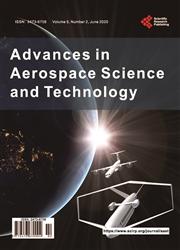MARSZUG—A Space Train for Regular Delivery of Astronauts onto Mars
引用次数: 0
Abstract
A project of the space train MARSZUG intended for regular delivery of astronauts to Mars is considered. In the first stage of the flight, the astronauts with the help of the carrier rocket equipped with a chemical rocket engine are delivered to the international space station (ISS). To deliver astronauts from Earth’s orbit to Mars orbit, a space train design consisting of two rockets, which have superconductive magnetoplasma electric engine MARS, has been developed. For the first time, a combined propulsion system MARS-M has been developed for the train movement, allowing carrying out the pitching, yaw and rotation of the rocket. This greatly simplifies the rocket control system and increases its reliability. The energy source of the electric engines is a sliding solar panel made of gallium arsenide. Working substance to create reactive thrust of electrorocket engines—hydrogen is stored in a liquid state in the cryogenic tank located along the longitudinal axis of the rocket. In the nasal part of the front electric rocket, a shaft rotating in a superconductive bearing is located. The shaft has a cylindrical nozzle, on which with the help of docking units two takeoff-landing capsules TLC-1 and TLC-2 are installed with which help landing and takeoff from the surface of Mars is carried out. This allows astronauts to constantly stay during the flight under the influence of gravity. To refuel the space train with liquid hydrogen in the orbit of Mars, the design of a space refueler with a chemical rocket engine is developed. The developed space train is able to regularly deliver astronauts to the surface near the northern pole of Mars.MARSZUG-A定期将宇航员送上火星的太空列车
正在考虑将宇航员定期运送到火星的MARSZUG太空列车项目。在飞行的第一阶段,宇航员在装有化学火箭发动机的运载火箭的帮助下被送往国际空间站。为了将宇航员从地球轨道运送到火星轨道,已经开发了一种由两枚火箭组成的太空列车设计,该火箭具有超导磁等离子体电动发动机Mars。首次为火车运动开发了MARS-M组合推进系统,使火箭能够进行俯仰、偏航和旋转。这大大简化了火箭控制系统并提高了其可靠性。电动发动机的能源是由砷化镓制成的滑动太阳能电池板。产生电子火箭发动机反应推力的工作物质——氢气以液态储存在沿火箭纵轴的低温罐中。在前部电动火箭的鼻部,有一根在超导轴承中旋转的轴。该轴有一个圆柱形喷嘴,在对接装置的帮助下,在喷嘴上安装了两个起飞-着陆舱TLC-1和TLC-2,用于帮助从火星表面着陆和起飞。这使得宇航员在飞行过程中能够在重力的影响下不断停留。为了在火星轨道上用液氢为太空火车加油,研制了一种带有化学火箭发动机的太空加油机。开发的太空列车能够定期将宇航员运送到火星北极附近的表面。
本文章由计算机程序翻译,如有差异,请以英文原文为准。
求助全文
约1分钟内获得全文
求助全文

 求助内容:
求助内容: 应助结果提醒方式:
应助结果提醒方式:


